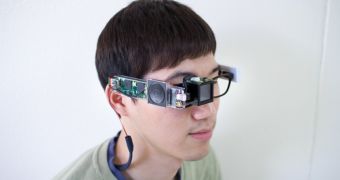Normally, computers use algorithms, facial recognition, motion tracking, barcodes and QR codes to deliver virtual reality in head-mounted displays or whatever else, but the K-Glass uses a different method.
Developed by researchers at the Korea Advanced Institute of Science and Technology (KAIST), K-Glass utilizes the Visual Attention Model (VAM).
In other words, it tries to replicate how the human brain establishes our surroundings and categorizes relevant and irrelevant visual data.
K-Glass is a wearable, hands-free display which, according to its creators, can perform 1.22 TOPS (tera-operations per second) while running at 250 MHz.
A 1.2 power supply provides it with the necessary 778 mW of power, which is 76% more efficient than other head-mounted displays, the company claims.
The KAIST team was able to compartmentalize the processing of data, reducing congestion and improving energy efficiency to this level.
It's not much different from how we process visual data by using sets of neurons which, despite being connected, work independently on different stages of the decision making process.
The K-Glass should have many different uses if it ever catches on. Like, say, you could go into a restaurant and have the whole menu, complete with food holograms, pop up in your line of sight.
"Our processor can work for long hours without sacrificing K-Glass's high performance, an ideal mobile gadget or wearable computer, which users can wear for almost the whole day," says Hoi-Jun Yoo, professor of electrical engineering at KAIST.
The video below is a demonstration of the K-Glass in action. It will be interesting to see how the device does against the Google Glass.
Probably not very well, since Google has a huge marketing ability and the money to back it up, and its supply/customer/retail chain extends around the entire world. Still, K-Glass should find some purchase in the segment thanks to its different method of data processing.

 14 DAY TRIAL //
14 DAY TRIAL // 